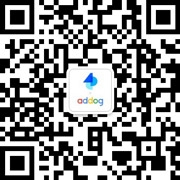
本案例默认翻译为中文,点击可切换回原语言
已切换成原语言,点击可翻译成中文
在淋浴时撒尿
案例简介:描述活动/条目: SOS Mata Atlantica 基金会是一个巴西非营利组织,成立于 1986年,致力于保护大西洋雨林 (Mata Atlantica), 生物多样性方面最丰富的生态系统之一,也是地球上最受灭绝威胁的生态系统之一。 描述客户的简报: 让负责任的用水成为巴西家庭的话题。巴西 16-24 岁的青少年,他们在那时还没有被视为变革的催化剂。52% 的年龄在 16-24 岁之间的人认为个人有责任制定国家的环境解决方案; 而 60% 的 60 岁以上的人认为这一责任属于国家。因此,SOS 决定联系他们的孩子,让他们带头教育家庭如何节约用水,而不是教育每个家庭的父母。 结果: 这场运动最初只针对巴西公众,但在 5 大洲的 66 个国家引起了全世界的轰动。从 2009年5月到 2010年3月,该活动网站有 450,000 多名独特访客。自从视频在 YouTube 上发布以来,它已经有近 100万的浏览量。在巴西,这项运动作为自发的媒体出现在开放电视和有线电视的所有主要新闻节目中。报纸、杂志、博客和新闻相关网站也引起了轰动。国际上,主要报纸、电视新闻节目和网站讨论了这场运动: 《世界报》、《纽约时报》、美国在线、《卫报》和《中国日报》。对媒体和促销的投资实际上为零,自发媒体的估计回报为 700.767 美元,印刷 73 美元,电视 4.494.120 美元,电视 53 美元和 15.447.189 美元, 10 在数字。估计媒体回报总额: 20.642.189 美元,36 美元。 执行: 4月,09 年的平面广告和 30 '点被推出,作为基金会年度活动 “万岁派对” 的邀请,以了解淋浴时撒尿如何有助于保护环境。该活动于 5 月份在 “万岁聚会” 期间正式启动,预计大量青少年将通过学术实地考察参加。当地电视频道被邀请报道这一事件,进一步帮助揭示了这一运动。博客和新闻网站制定了一个特殊的策略: 活动的内容高度病毒式传播,所以数字是公关方法的一个关键因素。有影响力的博客获得了对活动内容的提前访问。数字是公关战略的一个关键要素: 推特、 Youtube 和与博客作者的接触。竞选活动按计划进行,但反响比预期的要大得多。该计划只考虑了巴西媒体,但引起了国际关注。 情况: 我们发现,环保运动往往会引起公众强烈的拒绝、内疚和绝望感。SOS Mata Atlantica 非常需要一种新的方法来让它的信息不仅被听到,而且被分享。作为一个非营利组织,SOS 根本没有媒体预算,所以我们不能指望传统的媒体博览会。它的所有活动都必须有强有力的公关努力,让人们真正听到和看到它。 战略: 我们知道青少年对他们的信仰更加固执己见、热情和坚定,因此更有可能宣传他们。为了与更年轻的目标受众进行对话,s.O.S.需要采用一种透明、有趣和创新的语言,这种语言会吸引他们的注意力,让他们为自己的事业而团结起来。此外,在一个不该做的事情经常超过做的事情的时代,一个有趣和有争议的信息对观众没有压力。青少年也经常觉得他们生活在一个与世界其他地方相关的 “平行宇宙” 中,并且经常对所有传统事物产生不良反应。从我们的核心信息,到我们用来让人们参与进来的方法,一切都是以前所未有的方式让他们坐在驾驶座上。在这种情况下,与博客合作,煽动自发媒体对于动员人民和提高对这项事业的认识的运动的成功至关重要。
在淋浴时撒尿
案例简介:Describe the campaign/entry: The SOS Mata Atlantica Foundation is a Brazilian non-profit organization, founded in 1986, working towards the protection of the Atlantic Rain Forest (Mata Atlantica), one of the richest ecosystems in terms of biodiversity, and also one of the most threatened with extinction on the planet. Describe the brief from the client: To make responsible water consumption the topic of conversation within Brazilian households. Brazilian Teens 16- 24 years old, who up till then where not seen as catalysts for change. 52% of those between the ages of 16-24 believe that individuals are responsible for developing the country’s environmental solutions; while 60% of those aged 60+ believe this responsibility belongs to the State. So, instead of educating the mum’s and dad’s of every household, SOS decided to reach out to their kids and have them take the lead in educating the family on how they could save water. Results: The campaign was originally aimed to the Brazilian public only but it generated buzz all over the world in more than 66 countries, in 5 continents. The campaign website had more than 450,000 unique visitors from May 2009 to march 2010. Since the video launch on YouTube it has had almost 1 million views. In Brazil, the campaign appeared, as spontaneous media, in all major news shows in open and cable TV. There was also a great buzz in newspapers, magazines and blogs and news related sites. Internationally, major newspapers, TV news shows and websites discussed the campaign: Le Monde, The New York Times, AOL, The Guardian and China Daily. The investment in media and promotion was literally zero and the estimated return, in spontaneous media was US$700.767,73 in print, US$4.494.120,53 in TV and US$15.447.189,10 in digital. Total estimated media return: US$20.642.189,36. Execution: In April, 09 print ads and a 30’ spot were launched as an invitation to the Foundation’s annual event ‘Viva a Mata’ to learn about how peeing in the shower could help protect the environment. The campaign officially launched in May during ‘Viva a Mata’ where a large number of teens were expected to attend through academic field trips. Local TV channels were invited to cover the event, further helping reveal the campaign. A special strategy with bloggers and news sites was made:the content of the campaign is highly viral so digital was a key element of the PR approach. Influential bloggers were granted advance access to the campaign content. Digital was a key elemento of the PR strategy: Twitter, Youtube and approach with bloggers. The campaign ran according to plan however the repercussion was much greater than expected. The plan took account of Brazilian media outlets only but the buzz went international. The Situation: We found that environmental campaigns often generated a strong sense of rejection, guilt and hopelessness on the part of the public. SOS Mata Atlantica was in great need of a new approach to get its message not only heard, but also shared. As a non-profit organization, SOS has no media budget at all so we can’t count on traditional media exposition. All its campaigns must have a strong PR effort to make it truly heard and seen by the population. The Strategy: We knew that teens are more opinionated, passionate and adamant in their beliefs, thus more likely to publicize them. To enter in dialogue with a younger target audience, S.O.S. needed to adopt a transparent, fun and innovative language, one that would catch their attention and make them rally for its cause. Also, at an age where the DON’TS often outweigh the DO’S, a fun and polemic natured message that places no strain on its audience was in order. Teens also often feel like they live in a ‘parallel universe’ in relation to the rest of the world and often hold adverse reactions to everything traditional. Everything from our core message, to the methods we used to get people involved was geared to put them in the driver’s seat in ways never been done before.In this context, working with blogs, and fomenting spontaneous media was essential to the success of the campaign to mobilize people and generate awareness to the cause.
Pee In The Shower
案例简介:描述活动/条目: SOS Mata Atlantica 基金会是一个巴西非营利组织,成立于 1986年,致力于保护大西洋雨林 (Mata Atlantica), 生物多样性方面最丰富的生态系统之一,也是地球上最受灭绝威胁的生态系统之一。 描述客户的简报: 让负责任的用水成为巴西家庭的话题。巴西 16-24 岁的青少年,他们在那时还没有被视为变革的催化剂。52% 的年龄在 16-24 岁之间的人认为个人有责任制定国家的环境解决方案; 而 60% 的 60 岁以上的人认为这一责任属于国家。因此,SOS 决定联系他们的孩子,让他们带头教育家庭如何节约用水,而不是教育每个家庭的父母。 结果: 这场运动最初只针对巴西公众,但在 5 大洲的 66 个国家引起了全世界的轰动。从 2009年5月到 2010年3月,该活动网站有 450,000 多名独特访客。自从视频在 YouTube 上发布以来,它已经有近 100万的浏览量。在巴西,这项运动作为自发的媒体出现在开放电视和有线电视的所有主要新闻节目中。报纸、杂志、博客和新闻相关网站也引起了轰动。国际上,主要报纸、电视新闻节目和网站讨论了这场运动: 《世界报》、《纽约时报》、美国在线、《卫报》和《中国日报》。对媒体和促销的投资实际上为零,自发媒体的估计回报为 700.767 美元,印刷 73 美元,电视 4.494.120 美元,电视 53 美元和 15.447.189 美元, 10 在数字。估计媒体回报总额: 20.642.189 美元,36 美元。 执行: 4月,09 年的平面广告和 30 '点被推出,作为基金会年度活动 “万岁派对” 的邀请,以了解淋浴时撒尿如何有助于保护环境。该活动于 5 月份在 “万岁聚会” 期间正式启动,预计大量青少年将通过学术实地考察参加。当地电视频道被邀请报道这一事件,进一步帮助揭示了这一运动。博客和新闻网站制定了一个特殊的策略: 活动的内容高度病毒式传播,所以数字是公关方法的一个关键因素。有影响力的博客获得了对活动内容的提前访问。数字是公关战略的一个关键要素: 推特、 Youtube 和与博客作者的接触。竞选活动按计划进行,但反响比预期的要大得多。该计划只考虑了巴西媒体,但引起了国际关注。 情况: 我们发现,环保运动往往会引起公众强烈的拒绝、内疚和绝望感。SOS Mata Atlantica 非常需要一种新的方法来让它的信息不仅被听到,而且被分享。作为一个非营利组织,SOS 根本没有媒体预算,所以我们不能指望传统的媒体博览会。它的所有活动都必须有强有力的公关努力,让人们真正听到和看到它。 战略: 我们知道青少年对他们的信仰更加固执己见、热情和坚定,因此更有可能宣传他们。为了与更年轻的目标受众进行对话,s.O.S.需要采用一种透明、有趣和创新的语言,这种语言会吸引他们的注意力,让他们为自己的事业而团结起来。此外,在一个不该做的事情经常超过做的事情的时代,一个有趣和有争议的信息对观众没有压力。青少年也经常觉得他们生活在一个与世界其他地方相关的 “平行宇宙” 中,并且经常对所有传统事物产生不良反应。从我们的核心信息,到我们用来让人们参与进来的方法,一切都是以前所未有的方式让他们坐在驾驶座上。在这种情况下,与博客合作,煽动自发媒体对于动员人民和提高对这项事业的认识的运动的成功至关重要。
Pee In The Shower
案例简介:Describe the campaign/entry: The SOS Mata Atlantica Foundation is a Brazilian non-profit organization, founded in 1986, working towards the protection of the Atlantic Rain Forest (Mata Atlantica), one of the richest ecosystems in terms of biodiversity, and also one of the most threatened with extinction on the planet. Describe the brief from the client: To make responsible water consumption the topic of conversation within Brazilian households. Brazilian Teens 16- 24 years old, who up till then where not seen as catalysts for change. 52% of those between the ages of 16-24 believe that individuals are responsible for developing the country’s environmental solutions; while 60% of those aged 60+ believe this responsibility belongs to the State. So, instead of educating the mum’s and dad’s of every household, SOS decided to reach out to their kids and have them take the lead in educating the family on how they could save water. Results: The campaign was originally aimed to the Brazilian public only but it generated buzz all over the world in more than 66 countries, in 5 continents. The campaign website had more than 450,000 unique visitors from May 2009 to march 2010. Since the video launch on YouTube it has had almost 1 million views. In Brazil, the campaign appeared, as spontaneous media, in all major news shows in open and cable TV. There was also a great buzz in newspapers, magazines and blogs and news related sites. Internationally, major newspapers, TV news shows and websites discussed the campaign: Le Monde, The New York Times, AOL, The Guardian and China Daily. The investment in media and promotion was literally zero and the estimated return, in spontaneous media was US$700.767,73 in print, US$4.494.120,53 in TV and US$15.447.189,10 in digital. Total estimated media return: US$20.642.189,36. Execution: In April, 09 print ads and a 30’ spot were launched as an invitation to the Foundation’s annual event ‘Viva a Mata’ to learn about how peeing in the shower could help protect the environment. The campaign officially launched in May during ‘Viva a Mata’ where a large number of teens were expected to attend through academic field trips. Local TV channels were invited to cover the event, further helping reveal the campaign. A special strategy with bloggers and news sites was made:the content of the campaign is highly viral so digital was a key element of the PR approach. Influential bloggers were granted advance access to the campaign content. Digital was a key elemento of the PR strategy: Twitter, Youtube and approach with bloggers. The campaign ran according to plan however the repercussion was much greater than expected. The plan took account of Brazilian media outlets only but the buzz went international. The Situation: We found that environmental campaigns often generated a strong sense of rejection, guilt and hopelessness on the part of the public. SOS Mata Atlantica was in great need of a new approach to get its message not only heard, but also shared. As a non-profit organization, SOS has no media budget at all so we can’t count on traditional media exposition. All its campaigns must have a strong PR effort to make it truly heard and seen by the population. The Strategy: We knew that teens are more opinionated, passionate and adamant in their beliefs, thus more likely to publicize them. To enter in dialogue with a younger target audience, S.O.S. needed to adopt a transparent, fun and innovative language, one that would catch their attention and make them rally for its cause. Also, at an age where the DON’TS often outweigh the DO’S, a fun and polemic natured message that places no strain on its audience was in order. Teens also often feel like they live in a ‘parallel universe’ in relation to the rest of the world and often hold adverse reactions to everything traditional. Everything from our core message, to the methods we used to get people involved was geared to put them in the driver’s seat in ways never been done before.In this context, working with blogs, and fomenting spontaneous media was essential to the success of the campaign to mobilize people and generate awareness to the cause.
在淋浴时撒尿
暂无简介
Pee In The Shower
暂无简介
基本信息
暂无评分
已有{{caseInfo.tatolPeople}}人评分
创作者
案例详情
涵盖全球100万精选案例,涉及2800个行业,包含63000个品牌
热门节日97个,23个维度智能搜索
-

项目比稿
品类案例按时间展现,借鉴同品牌策略,比稿提案轻松中标
-

创意策划
任意搜索品牌关键词,脑洞创意策划1秒呈现
-

竞品调研
一键搜索竞品往年广告,一眼掌握对手市场定位
-

行业研究
热词查看洞悉爆点,抢占行业趋势红利
登录后查看全部案例信息
如果您是本案的创作者或参与者 可对信息进行完善







